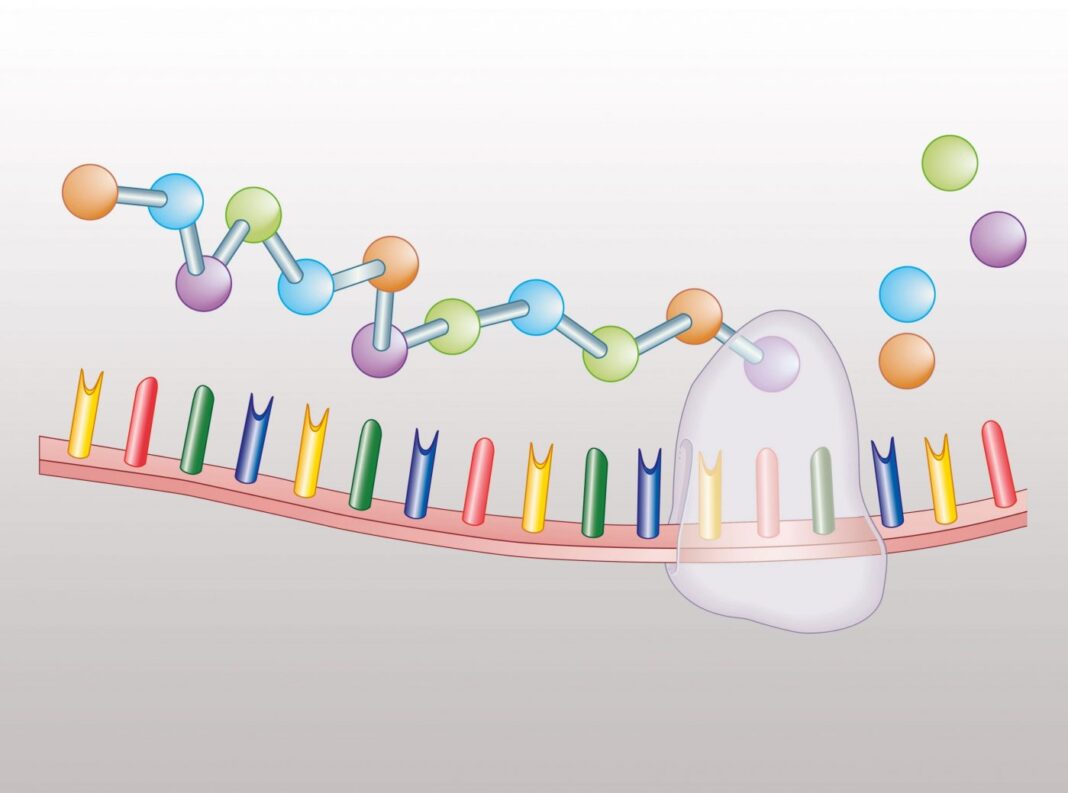Just as children can strengthen ties between parents, ensuring the family stays together at least until they’re grown, a new study shows nascent polypeptide chains have the inherent ability to ensure that the machinery that works to produce them stays intact until the polypeptide is fully synthesized.
The process of synthesizing long chains of polypeptides from mRNA is fraught with the risk of premature termination. This can occur when the machinery that reads the mRNA code to synthesize polypeptide chains—the ribosome complex—encounters an intrinsic ribosomal destabilization (IRD) sequence, such as a stretch of negatively charged amino acids.
In a study published this week in The EMBO Journal, scientists at the Tokyo Institute of Technology (Tokyo Tech) have uncovered that newly synthesized peptide chains stabilize ribosomes during translation, preventing them from dissociating mid-process.
The multi-component ribosome complex houses a tunnel within which amino acids are strung together into polypeptide chains based on the code of an mRNA strand that passes through the tunnel at the same time.
The authors showed long peptide sequences spanning the exit of the ribosome’s tunnel and bulky amino acid residues at the entrance of the ribosome’s tunnel stabilize the ribosome complex by bridging its subunits through a positive feedback system. These attributes serve as a bridge between the large and small ribosomal subunits that form the complex protein-synthesizing machinery, keeping them from letting go of each other while the polypeptide is being synthesized.
“The need for a tunnel structure is not clear, given that the primary function of the ribosome is simply to polymerize amino acids into a polypeptide. The tunnel architecture, which spans 30 to 40 nascent polypeptides in length, may have evolved to balance the stabilization and obstacles of translation elongation,” said Hideki Taguchi, PhD, professor at the Cell Biology Center at Tokyo Tech and senior author of the study.
“Our findings highlight a positive feedback system wherein the ribosomal tunnel is occupied by its own product for uninterrupted translation. We report on the role of nascent peptide chains within the ribosomal exit tunnel in ensuring efficient protein synthesis,” said Taguchi.
The study is reported in an article titled, “Nascent polypeptide within the exit tunnel stabilizes the ribosome to counteract risky translation.” The findings suggest there exists a selection pressure for length and bulkiness in nascent polypeptide chains that minimizes the risk of nonproductive translations due to premature discontinuation. This selection affects amino acid distribution throughout the proteome.

Through proteomic profiling of the bacterial model system, Escherichia coli, the authors identified IRD sequences in various proteins and constructed sequences of varying lengths preceding the IRD motifs to show that the peptide sequences that span the ribosomal tunnel can counteract destabilization by the IRD sequence in a length-dependent but sequence-independent manner. They also showed that longer sequences were associated with better IRD lowering efficiency.
The authors went on to investigate how properties of amino acid residues in the nascent polypeptide and their distribution across the proteome influence IRD. Substituting amino acid residues preceding the IRD sequence, they found that residues with bulkier side chains were able to prevent IRD more effectively than residues with leaner side chains.
The authors also observed a bias in the sequence of amino acids across the proteome. Open reading frames that code for proteins were enriched in bulkier amino acid residues towards the amino-terminal end of the polypeptide that are translated first, as elongation proceeds to the carboxy-terminus.
The researchers speculate that these bulky residues occupy the entrance of the ribosomal exit site, stabilizing the translation machinery by bridging ribosomal subunits. On removing specific proteins in the ribosomal exit tunnel, they found an increase in IRD. This suggests interactions between the nascent peptide and ribosomal proteins contribute to uninterrupted translation.
These findings indicate an intrinsic regulatory mechanism where the nascent peptide collaborates with the ribosomal tunnel to help maintain ribosomal stability and continuity in translation elongation.



